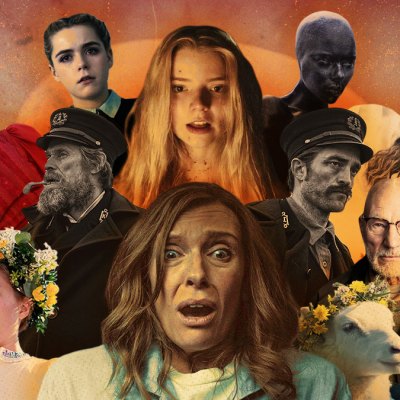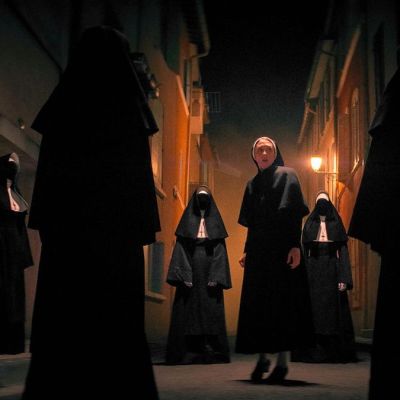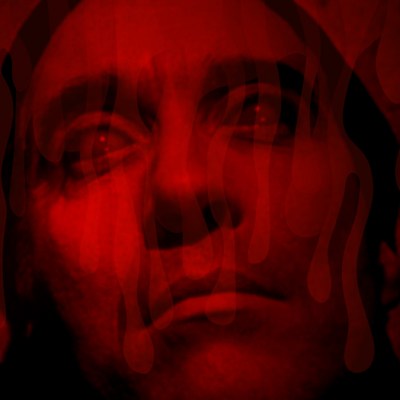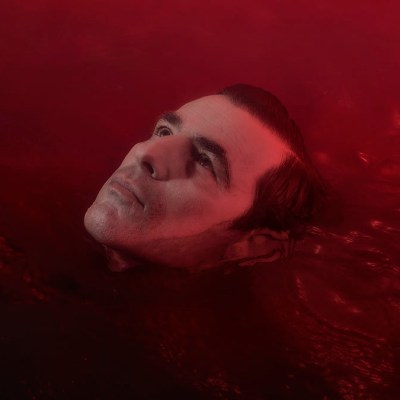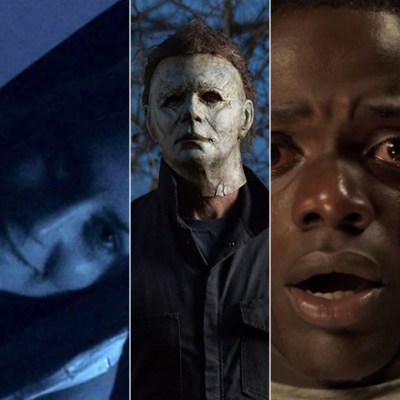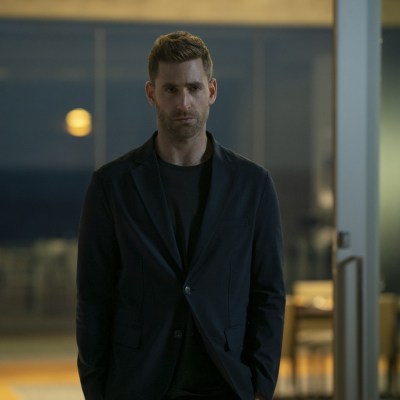Best Horror Movies Streaming on HBO Max
Are you afraid of the dark? You will be after you get through our spooky list of the best horror movies on HBO Max, just in time for Halloween!
Editor’s Note: This post is updated monthly. Bookmark this page and come back every month to see the new horror movies on HBO Max.
Updated for October 2020
What ever would we do without horror?
So much of our daily life is built around logic and known, verifiable facts, and for some, the rest of the time must be supplemented with comforting reassurances that everything is going to be alright. Well if the last year has taught us anything… that’s not the case. Perhaps this is why horror hounds know the best way to face abstract fears is to confront them head on… and preferably with a screen in the way.
So, with Halloween around the corner, we figured it’s time to get in touch with our illogical, terrified animal brain. That’s where horror and horror movies in particular come in. Gathered here are the best horror movies on HBO Max for your scaring needs.
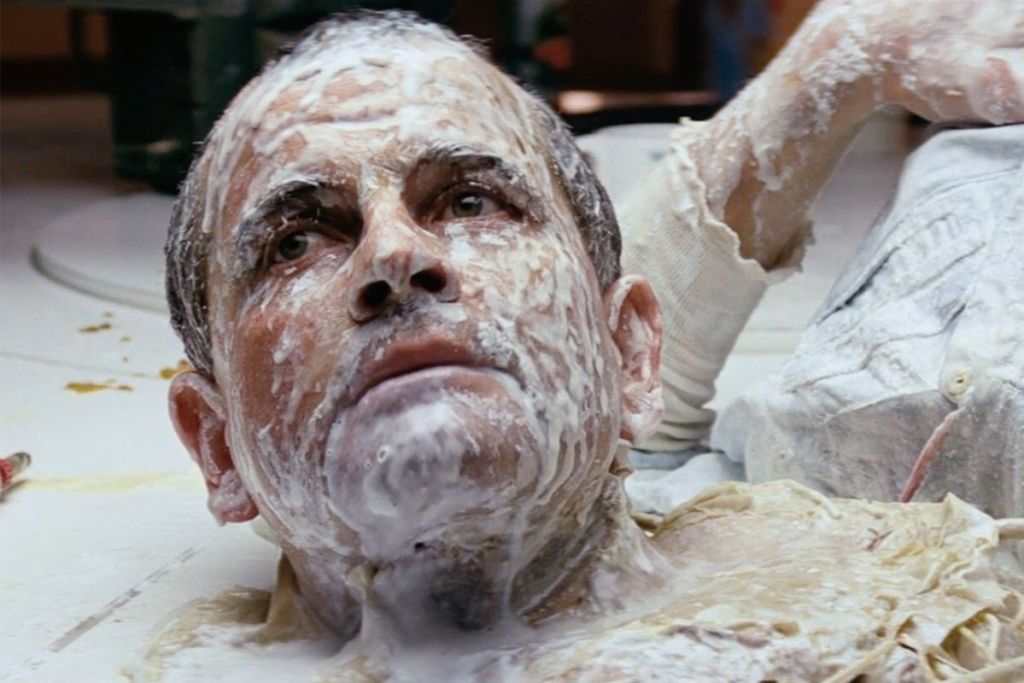
Alien
“In space, no one can hear you scream,” the tagline for Ridley Scott’s 1979 sci-fi/horror epic promised. Well maybe they should have screened this thing in space because I’m sure all that audiences in theaters did was scream.
Alien has since evolved into a heady, science fiction franchise that has stretched out for decades. The original film, however, is a small-scale, terrifyingly claustrophobic thriller.
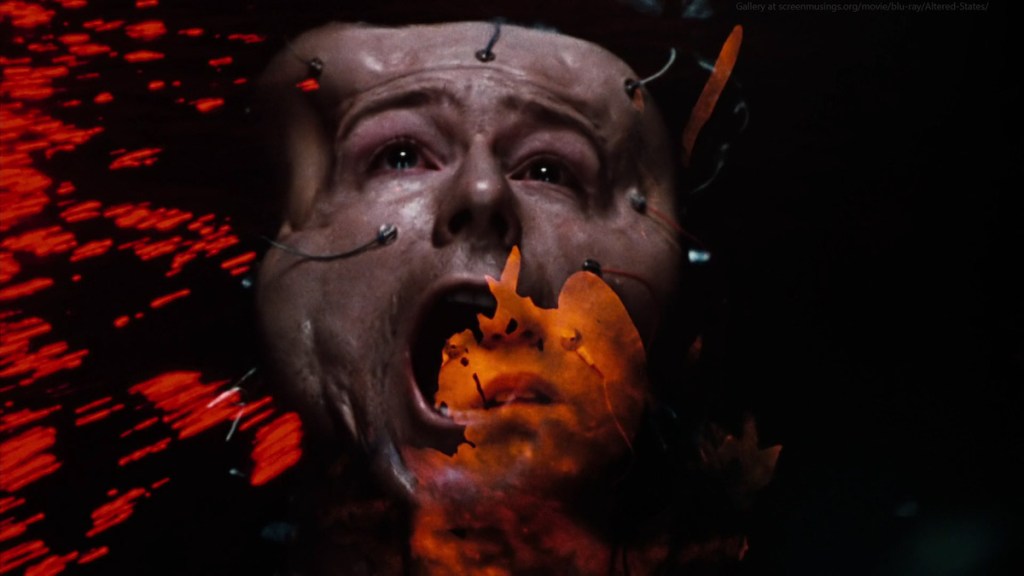
Altered States
What if you could tap into the vast swaths of the brain you never use? What if you did and didn’t like what we found? And what if it was an absolute psychedelic rush of a cinematic experience?
All three questions are answered in their own way during Ken Russell’s Altered States, a wild sci-fi thriller. In the film, William Hurt stars as a psychologist who begins experimenting with taking hallucinatory drugs while in a sensory depravation tank.
Yes, he manages to expand his consciousness; he also begins to expand his physical body as it transforms beneath his skin. Or does it? Well that’s yet another good question…

An American Werewolf in London
Arguably the definitive werewolf movie, John Landis’ 1981 horror masterpiece has the single greatest on-screen lycanthropic transformation in movie history… and that’s only one of its appeals.
Peppered with loving references to the werewolf movies that came before it and a few legitimate laughs to go along with the scares, An American Werewolf in London is remarkably knowing and self-aware, without ever flirting with parody.
Not enough can be said about Rick Baker’s practical effects, which extend beyond the aforementioned on-screen transformation and into one of the most gruesome depictions of a werewolf attack aftermath you’re ever likely to see. A classic of the era, it still can get under the skin whenever Griffin Dunne’s mutilated corpse rises from the grave to warn his friend to “beware the moon.”
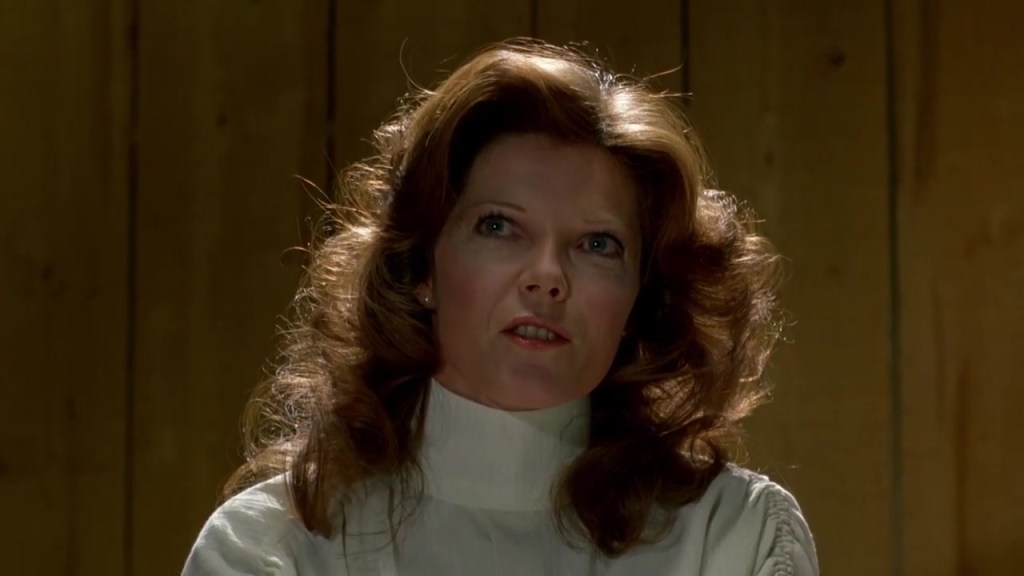
The Brood
I bet you never thought placenta could look so tasty, but when Samantha Eggar’s Nola Carveth licks her newborn clean you’ll be craving seconds within the hour. She brings feline intuition to female troubles. We get it. Having a new baby can be scary. Having a brood is terrifying. Feminine power is the most horrifying of all for male directors used to being in control.
David Cronenberg takes couples therapy one step too far in his 1979 psychological body-horror film, The Brood. When it came out critics called it reprehensible trash, but it is the writer-director’s most traditional horror story. Oliver Reed plays with mental illness like Bill Sikes played with the kids as Hal Raglan, the psychotherapist treating the ex-wife of Frank Carveth (Art Hindle). The film starts slow, unfolding its drama through cuts and bruises.
Cronenberg unintentionally modifies the body of the Kramer vs. Kramer story in The Brood, but the murderous munchkins at the external womb of the film want a little more than undercooked French toast.
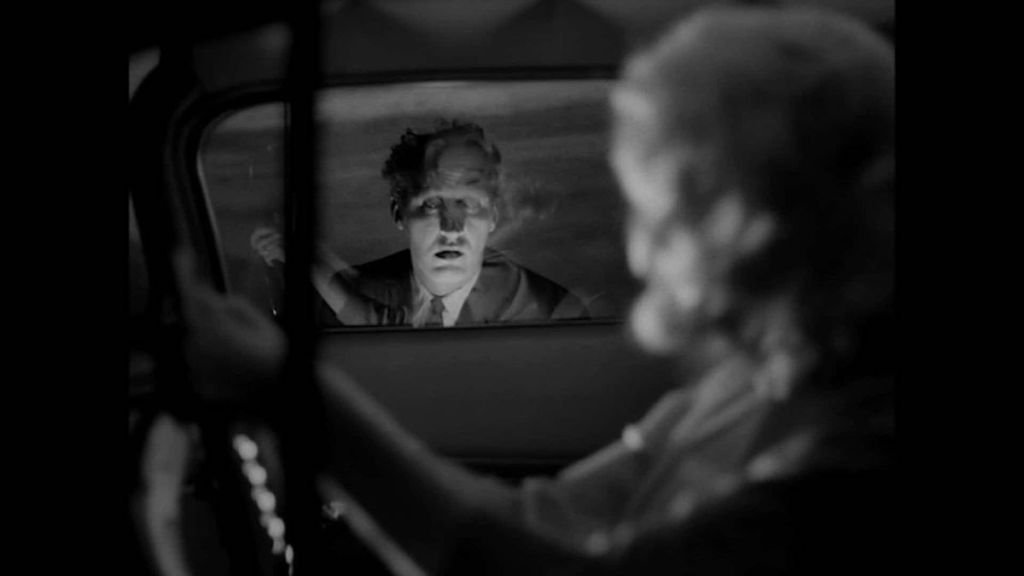
Carnival of Souls
Carnival of Souls may be the most unlikely of chillers to appear in the Criterion Collection. Hailing from the great state of Kansas and helmed by commercial director Herk Harvey, who was looking for his big break in features, there is something hand-crafted about the whole affair. There’s also something unmistakably eerie.
The story is fairly basic campfire boilerplate, following a woman (Candace Hilligoss) who survives a car crash but is then haunted by the sound of music and visions of the ghoulish dead–beckoning her toward a decrepit carnival abandoned some years earlier–and the acting can leave something to be desired. But the dreadful dreamlike atmosphere is irresistible.
With a strong sense of fatalism and inescapable doom, the film takes an almost melodic and disinterested gait as it stalks its heroine to her inevitable end, presenting images of the walking dead that linger in the mind long after the credits roll.
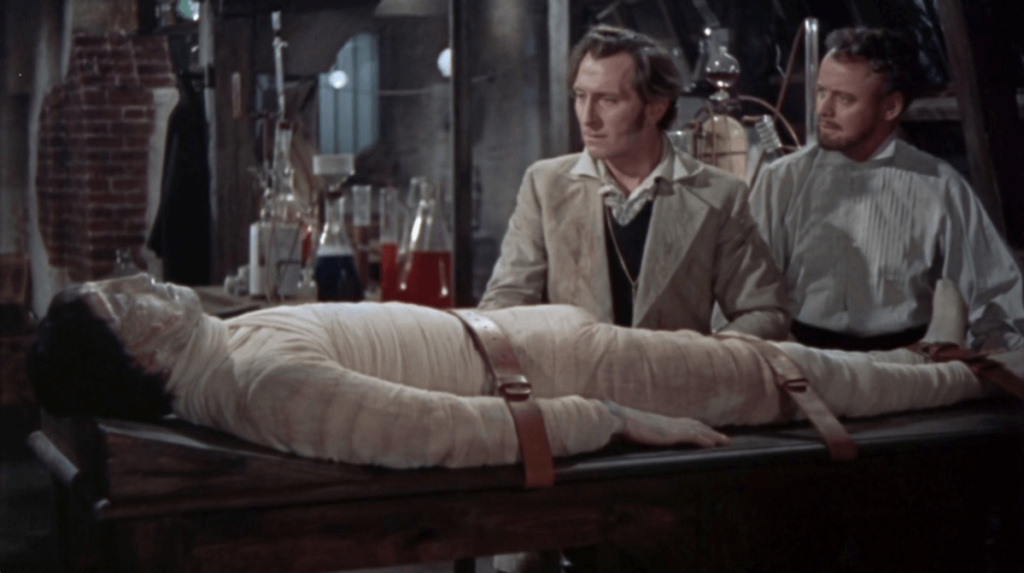
The Curse of Frankenstein
Hammer is probably best remembered now for its series of Christopher Lee-starring Dracula movies. Yet its oddball Frankenstein franchise deserves recognition too. While Hammer’s efforts certainly pale in comparison to the Frankenstein movies produced by Universal Pictures in the 1930s and ’40s, the Hammer ones remain distinctly unique. Whereas the Creature was the star of the earlier films, so much so the studio kept changing the actor beneath the Jack Pierce makeup after Boris Karloff got fed up three movies in, the not-so-good doctor leads the Hammer alternatives.
Indeed, between bouts of playing the almost sickeningly pious Abraham Van Helsing, Peter Cushing portrayed a perverse and dastardly Victor Frankenstein at Hammer, and it all begins with The Curse of Frankenstein. It isn’t necessarily the best movie in the series, but it introduces us to Cushing’s cruel scientist, played here as less mad than malevolent.
It also features Christopher Lee in wonderfully grotesque monster makeup. This is the film where Hammer began forming an identity that would become infamous in the realm of horror.
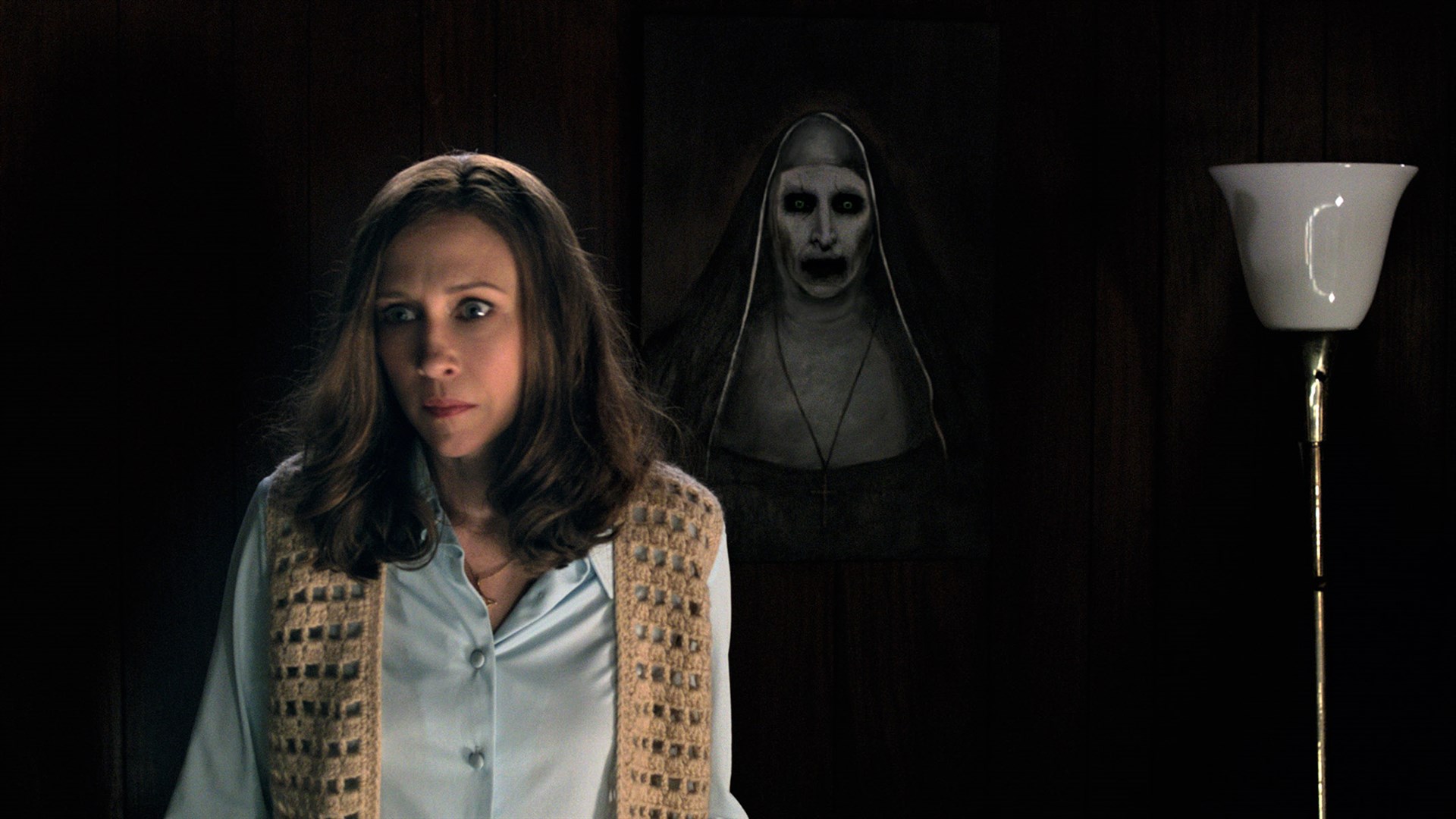
The Conjuring 2
Making an effective, truly spooky mainstream horror film is hard enough. But The Conjuring franchise really nailed things out of the gate with a sequel that is every bit as fun and terrifying as the original.
Patrick Wilson and Vera Farmiga return as paranormal investigators Ed and Lorraine Warren in The Conjuring 2. This time the Warrens head to Great Britain to attend to the Hodgson family, dealing with some poltergeist problems in their Enfield home. The source of the Enfield haunting’s activity contains some of the most disturbing and terrifying visuals in the entire Conjuring franchise and helped to set up a (sadly pretty bad) spinoff sequel in The Nun.

Doctor Sleep
Let’s be up front about this: Doctor Sleep is not The Shining. For some that fact will make this sequel’s existence unforgivable. Yet there is a stoic beauty and creepy despair just waiting to be experienced by those willing to accept Doctor Sleep on its own terms.
Directed by one of the genre’s modern masters, Mike Flanagan, the movie had the unenviable task of combining one of King’s most disappointing texts with the opposing sensibilities of Stanley Kubrick’s singular The Shining adaptation.
And yet, the result is an effective thriller about lifelong regrets and trauma personified by the ghostly specters of the Overlook Hotel. But they’re far from the only horrors here. Rebecca Ferguson is absolutely chilling as the smiling villain Rose the Hat, and the scene where she and other literal energy vampires descend upon young Jacob Tremblay is the stuff of nightmares. Genuinely, it’s a scene you won’t forget, for better or worse….
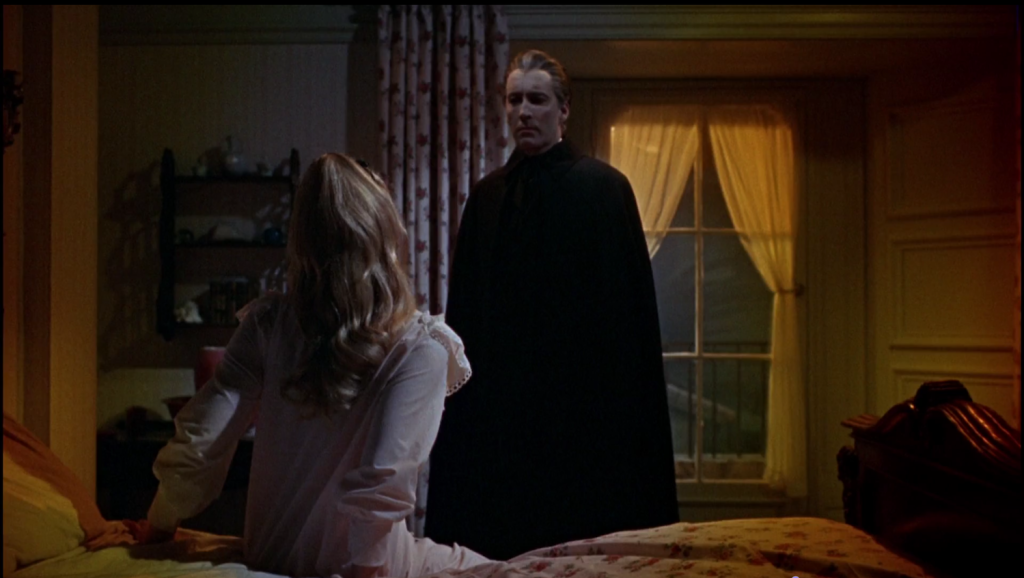
Dracula Has Risen from the Grave
Hammer Films’ fourth Dracula movie, and third to star the ever reluctant Christopher Lee, is by some fans’ account the most entertaining one. While it lacks the polish and ultimate respectability of Lee’s first outing as the vampire, Horror of Dracula (which you can read more about below), just as it is missing the invaluable Peter Cushing, Dracula Has Risen from the Grave arrived in 1968 at the crossroads of Hammer’s pulpy aesthetic. Their films had not yet devolved into exploitative shlock as they would a few years later, but the censors seemingly were throwing up their hands and allowing for the studio’s vampires to be meaner, bloodier, and sexier.
In this particular romp, Dracula has indeed risen from the grave (yes, again!) because of the good intentions of one German monsignor (Rupert Davies). The religious leader is in central Europe to save souls, but the local denizens of a village won’t go to a church caught in the shadow of Castle Dracula. So the priest exorcises the structure, oblivious that his sidekick is also accidentally dripping blood into the mouth of Dracula’s corpse down the river. Boom he’s back!
And yet, our fair Count can’t enter his home anymore. So for revenge, Dracula follows the monsignor to his house and lays eyes on the patriarch’s comely young niece (Veronica Carlson). You can probably figure out the rest.
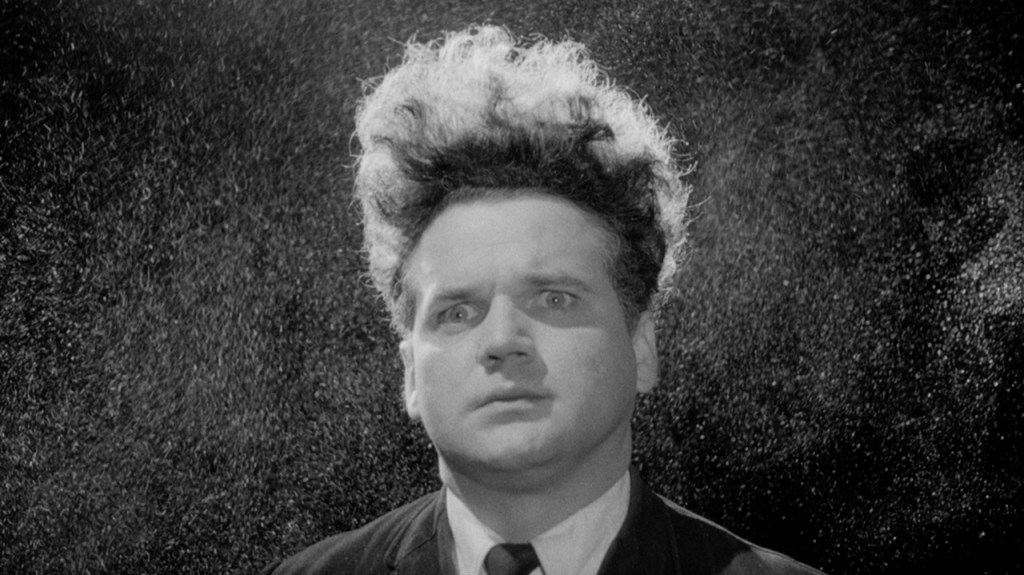
Eraserhead
“In Heaven, everything is fine,” sings the Lady in the Radiator in Eraserhead. “You’ve got your good things, and I’ve got mine.”
You may get something short of paradise, but the insular world David Lynch created for his 1977 experimental existential horror film is a land of mundane wonders, commonplace mysteries, and extremely awkward dinner conversations. Lynch’s first feature film is surrealistic, expressionistic, and musically comic. The minor key score and jarring black and white images bring half-lives to the industrial backdrop and exquisite squalor. At its heart though, Eraserhead is poignant, sad, and ultimately relatable on a universal level.
Jack Nance’s Henry Spencer is the spiky-haired everyman. He works hard at his job, cares deeply for his deformed, mutant child, and is desperate to please his extended family. Lynch lays a comedy of manners in a rude, crude city. The film is an assault on the senses, and it might take a little while for the viewer’s brains to adjust to the images on the screen; it is a different reality, and not an entirely inviting one, but stick with it. Once you’re in with the in-laws, you’re home free. When you make it to the end, you can tell your friends you watched all of Eraserhead. When they ask you what it’s about, you can tell them you saw it.
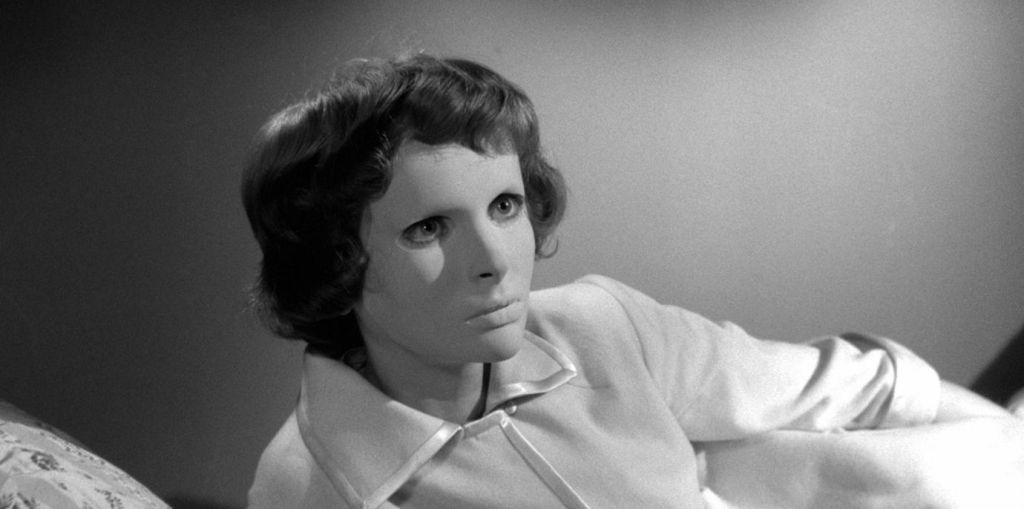
Eyes Without a Face
“I’ve done so much wrong to perform this miracle,” Doctor Génessier (Pierre Brasseur) confesses in the 1960 horror film Eyes Without a Face. But he says it in French, making it all so much more poignant, allowing it to underscore everything director and co-writer Georges Franju did right. We feel for the respectable plastic surgeon forced to do monstrous things. But the monster behind the title character is his young daughter Christiane (Édith Scob). She spends the majority of the film behind a mask, even more featureless than the unpainted plastic Captain Kirk kid’s costume Michael Myers wore in Halloween. The first time we see her face though, the shock wears off quickly and we are more moved than terrified.
Like Val Lewton films, the horror comes from the desolate black-and-white atmosphere, shrouding the claustrophobic suspense in German Expressionism. Maurice Jarre’s score evokes a Gothic carnival as much as a mad scientist’s laboratory. After his daughter’s face is hideously disfigured in an accident, Dr. Génessier becomes obsessed with trying to restore it. We aren’t shown much, until we’re shown too much. We see his heterograft surgical procedure in real time. A woman’s face is slowly flayed from the muscle. The graphic scenes pack more of a visceral shock after all the encroaching dread.
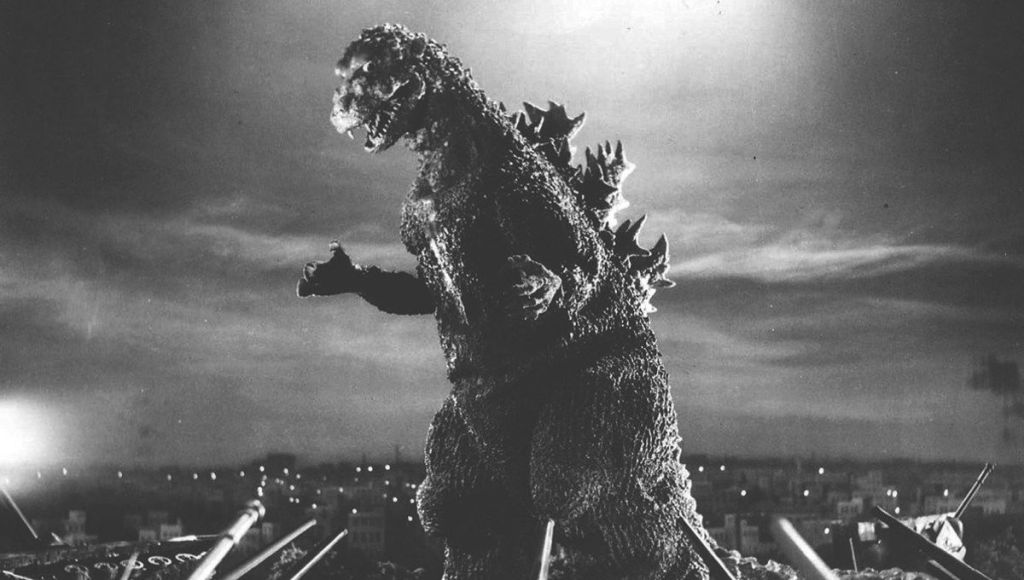
Godzilla
As the original and by far still the best Godzilla movie ever produced, this 1954 classic (originally titled Gojira), is one of the many great Showa Era classics that the Criterion Collection and HBO Max are making readily available to American audiences. And if you want to watch one that is actually scary, look no further.
In this original uncut Japanese form, the movie’s genuine dread of nuclear devastation, as well as nightly air raids, less than 10 years since World War II ended in several mushroom clouds, is overwhelming. Tapping into the real cultural anxiety of a nation left marred by the memory of its dead, as well as the recent incident of a fishing crew being contaminated by unannounced hydrogen bomb testing at Bikini Atoll, Godzilla encapsulates terror for the atomic age in a giant lizard.
And unlike the sequels there is nothing cuddly or amusing about this original Kaiju with its scarred body and legion of tumors. This is the one Godzilla movie to play it straight, and it still plays today.
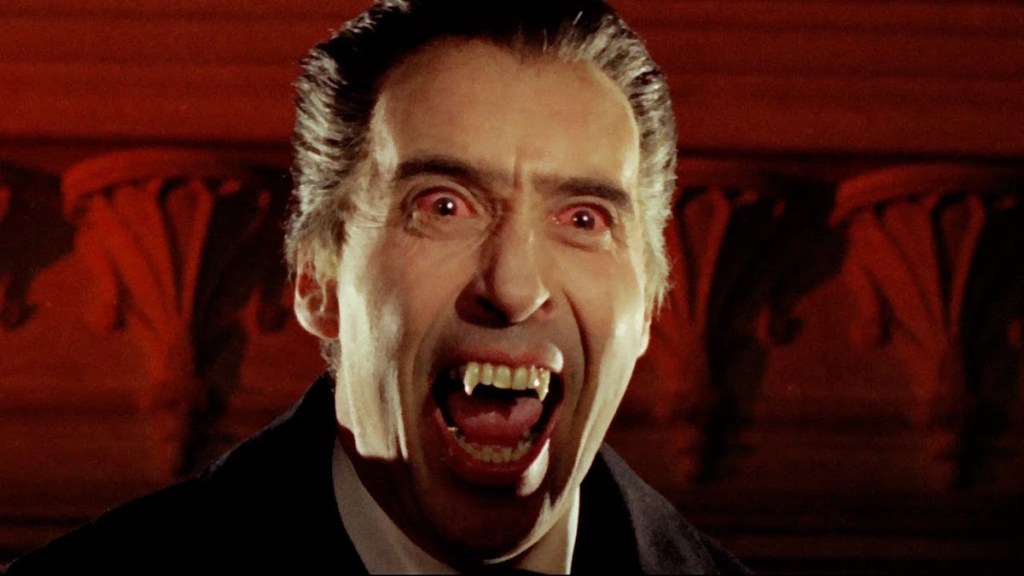
Horror of Dracula
Replacing Bela Lugosi as Dracula was not easily done in 1958. It’s still not easily done now. Which makes the fact that Christopher Lee turned Bram Stoker’s vampire into his own screen legend in Horror of Dracula all the more remarkable. Filmed in vivid color by director Terence Fisher, Horror of Dracula brought gushing bright red to the movie vampire, which up until then had been mostly relegated to black and white shadows.
With its penchant for gore and heaving bosoms, Horror of Dracula set the template for what became Hammer Film Productions’ singular brand of horror iconography, but it’s also done rather tastefully the first time out here, not least of all because of Lee bring this aggressively cold-blooded version of Stoker’s monster to life. It’s all business with this guy.
Conversely, Abraham Van Helsing was never more dashing than when played by Peter Cushing in this movie. The film turned both into genre stars, and paved the way for a career of doing this dance time and again.

The Invisible Man
After years of false starts and failed attempts at resurrecting the classic Universal Monsters, Universal Pictures finally figured out how to make it work: They called Blumhouse Productions.
Yep, Jason Blum’s home for micro-budgeted modern horror worked wonders alongside writer-director Leigh Whannell in updating the classic 1933 James Whale movie, and the H.G. Wells novel on which it is based, for the 21st century.
Turning the story of a man who masters invisibility into a horrific experience told from the vantage of the woman trying to escape his toxic violence, The Invisible Man becomes a disquieting allegory for the #MeToo era. It also is a devastating showcase for Elisabeth Moss who is compelling as Cecilia, the abused and gaslighted woman that barely found the will to escape, yet will now have to discover more strength since everyone around her shrugs off the idea of her dead ex coming back as an invisible man…

Lifeforce
Most assuredly a horror movie for a very acquired taste, there are few who would call Tobe Hooper’s career-destroying Lifeforce a good movie. There probably aren’t even many who would call it a fun movie. But for those with a singular taste for batshit pulp run amok, Lifeforce needs to be seen to be believed: Naked French vampire girls from outer space! Hordes of extras as zombies marauding through downtown London! Lush Henry Mancini music over special effects way outside of Cannon Films’ budget!!! Patrick Stewart as an authority figure possessed by said naked French space vampire, trying to seduce an astronaut via makeout sessions?!
… What is this movie? Why does it exist? We don’t know, but we’re probably more glad it does than the people who made it.

Magic
As much a psychological case study as as a traditional horror movie, for those who like their terror rooted in humanity, Magic may be the creepiest iteration of the “killer doll” subgenre since this is about the man who thinks his dummy is alive. Starring Anthony Hopkins before he was Hannibal, or had a “Sir” in front of his name, Magic is the brain child of William Goldman, who adapted his own novel into this movie before he’d go on to do the same for The Princess Bride (as well as adapt Stephen King’s Misery), but after he’d already written Butch Cassidy and the Sundance Kid and Marathon Man.
In the film, Hopkins stars as Corky, a down on his luck ventriloquist who tries to get his life together by tracking down his high school sweetheart (Ann-Margret). She’ll soon probably wish he didn’t bother once she realizes Corky believes his ventriloquist dummy Fats really is magic… and is determined to get him to act on the most heinous of impulses.

The Most Dangerous Game
Before King Kong, Merian C. Cooper and Ernest B. Schoedsack released The Most Dangerous Game, one of the all-time great pulp movies, based on a short story by Richard Connell. This classic has influenced everything from Predator to The Running Man, The Hunger Games to Ready or Not.
It’s the story of a big game hunter who shipwrecks on a remote island with an eccentric Russian Count who escaped the Bolshevik Revolution (Leslie Banks). The wayward noble now drinks, studies, and charms his apparently frequent array of unannounced guests, including two other survivors from a previous (suspicious) wreck. The film quickly boils down to a mad rich man determined to hunt his guests as prey across the island for the ultimate thrill.
Man hunting man, man lusting after woman in a queasy pre-Code fashion, this is a primal throwback to adventure yarns of the 19th century, which were still relatively recent in 1932. Shot simultaneously with King Kong, this is 63 brisk minutes of excitement, dread, and delicious overacting. Let the games begin.

Night of the Living Dead
“They’re coming to get you, Barbara!”
The zombie movie that more or less invented our modern understanding of what a zombie movie is, there is little new that can be said about George A. Romero’s original guts and brains classic, Night of the Living Dead. Shot in black and white and on almost no budget, the film reimagined zombies as a horde of ravenous flesh-eaters, as opposed to a lowly servant of the damned and enchanted.
Still visually striking in black and white, perhaps the key reason to go back to the zombie movie that started it all is due to how tragically potent its central conflict from 1968 remains: When strangers are forced to join forces and barricade in a farmhouse to survive a zombie invasion, the wealthy white businessman is constantly at odds with the young Black man in the group, to the point of drawing weapons…

Ready or Not
The surprise horror joy of 2019, Ready or Not was a wicked breath of fresh air from the creative team Radio Silence. With a star-making lead turn by Samara Weaving, the movie is essentially a reworking of The Most Dangerous Game where a bride is being hunted by her groom’s entire wedding party on the night of their nuptials.
It’s a nutty premise that has a delicious (and broad) satirical subtext about the indulgences and eccentricities of the rich, as the would-be extended family of Grace (Weaving) is only pursuing her because they’re convinced a grandfather made a deal with the Devil for their wealth–and to keep it they must step on those beneath them every generation. Well step, shoot, stab, and ritualistically sacrifice in this cruelest game of hide and seek ever. Come for the gonzo high-concept and stay for the supremely satisfying ending.
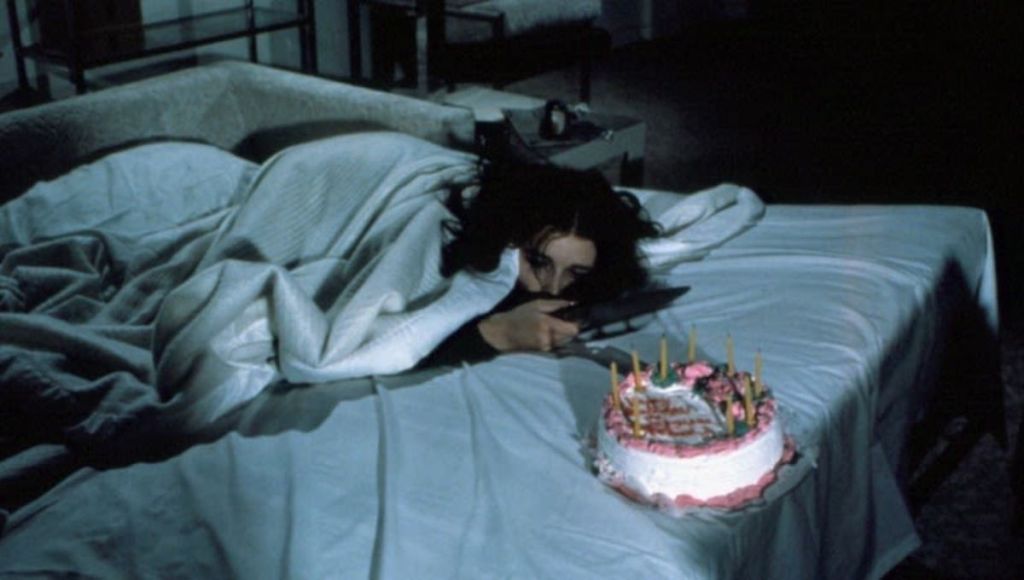
Sisters
One of the scariest things about the 1972 psychological thriller Sisters is the subliminal sounds of bones creaking and muscles readjusting during the slasher scenes. Margot Kidder plays both title characters: conjoined twins, French Canadian model Danielle Breton and asylum-committed Dominique Blanchion, who had been surgically separated. Director Brian De Palma puts the movie together like a feature-long presentation of the shower scene in Alfred Hitchcock’s Psycho. The camera lingers over bodies, bloodied or pristine, mobile or prone, with fetishistic glee before instilling the crime scenes in the mind’s eye. He allows longtime Hitchcock composer Bernard Herrmann to assault the ear.
Read more
De Palma was inspired by a photograph of Masha and Dasha Krivoshlyapova, Russian conjoined twins with seemingly polarized temperaments. There may be no deeper bond than blood, which the film has plenty of, but the real alter ego comes from splitscreen compositions and an outside intruder. The voyeuristic delight culminates in a surgical dream sequence with freaks, geeks, a giant, and dwarves. Nothing is as it seems and an out-of-order telephone is a triggering reminder.
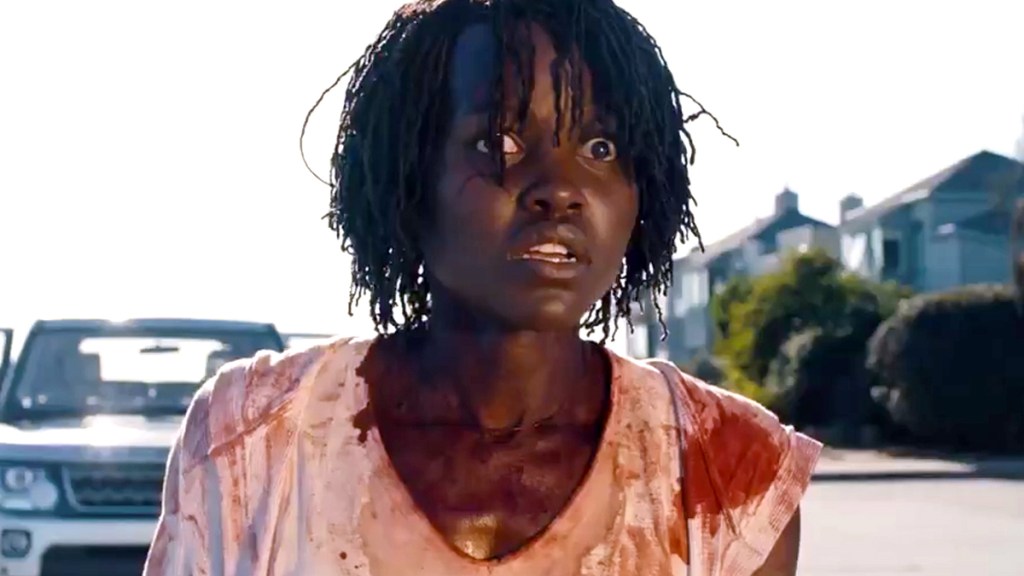
Us
Jordan Peele’s debut feature Get Out was a near instant horror classic so anticipation was high for his follow-up. Thanks to an excellent script, Peele’s deep appreciation of pop culture, and some stellar performances, Us mostly lived up to the hype.
The film tells the story of the Wilson family from Santa Cruz. After a seemingly normal trip to a summer home and the beach, Adelaide (Lupita Nyong’o), Gabe (Winston Duke) and their two kids are confronted by their own doppelgangers, are weird, barely verbal, and wearing red. But then Adelaide is not terribly surprised given her own personal childhood traumas. And that’s only the beginning of the horror at play. Fittingly, Us feels like a feature length Twilight Zone concept done right.
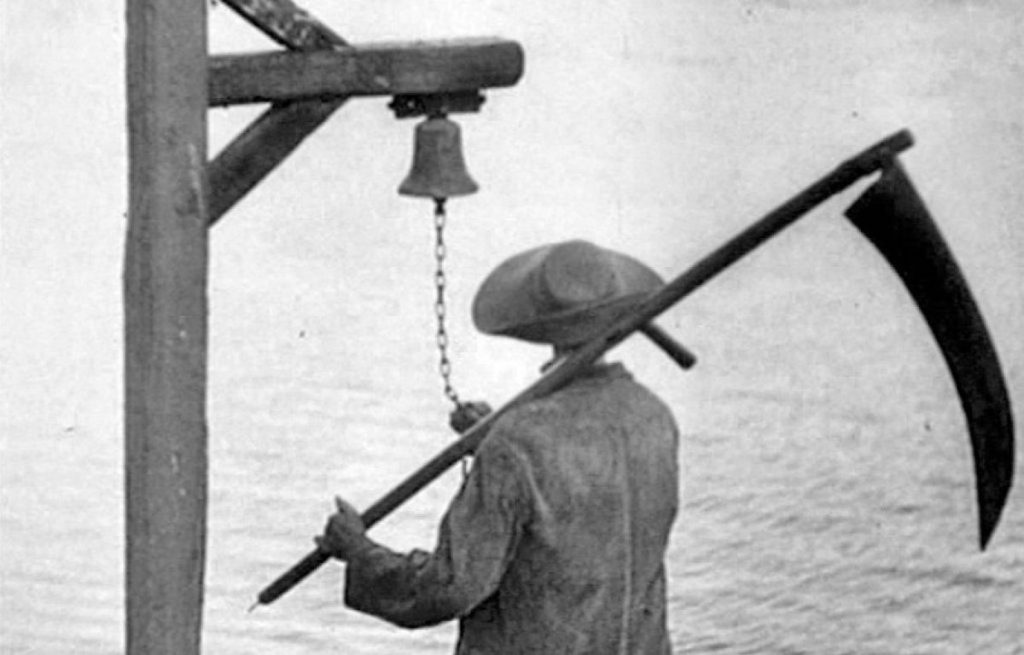
Vampyr
A nigh silent picture, Vampyr came at a point of transition for its director Carl Th. Dreyer. The Danish filmmaker, who often worked in Germany and France at this time, was making only his second “talkie” when he mounted this vampire opus. That might be why the movie is largely absent of dialogue. The plot, which focuses on a young man journeying to a village that is under the thrall of a vampire, owes much to Bram Stoker’s Dracula as well as F.W. Murnau’s Nosferatu from some years earlier.
Yet there horror fans should seek Vampyr out, if for no other reason than the stunning visuals and cinematography. Alternating between German Expressionist influences in its use to shadows to unsettling images crafted in naturalistic light, such as a boatman carrying an ominous scythe, this a a classic of mood and atmosphere. Better still is when they combine, such as when the scythe comes back to bedevil a woman sleeping, trapping us all in her nightmare. Even if its narrative has been told better, before and after, there’s a reason this movie’s iconography lingers nearly a century later.

